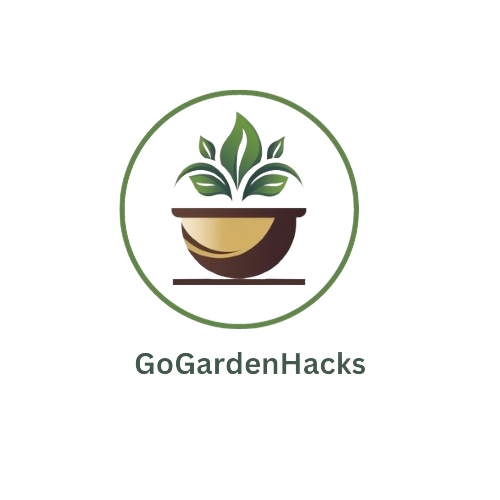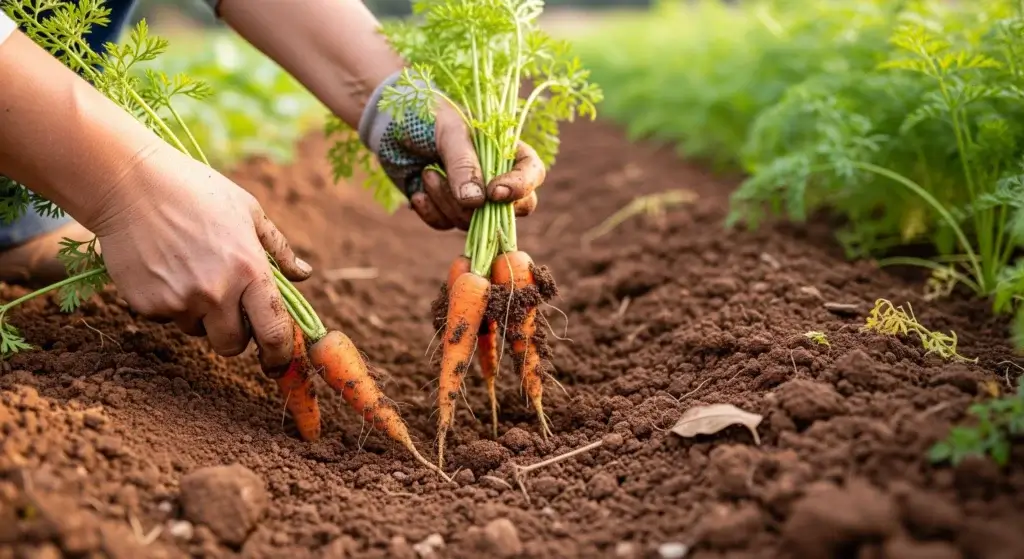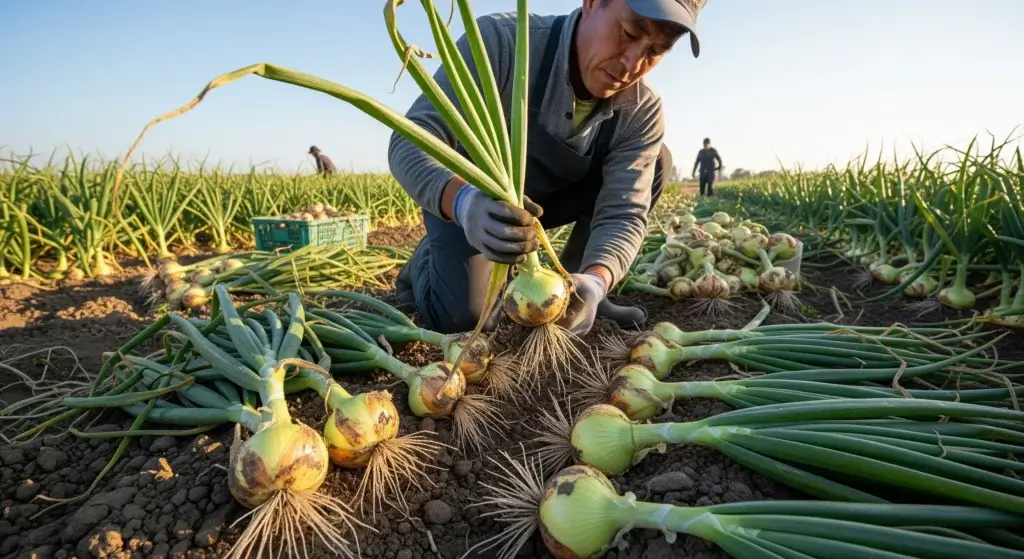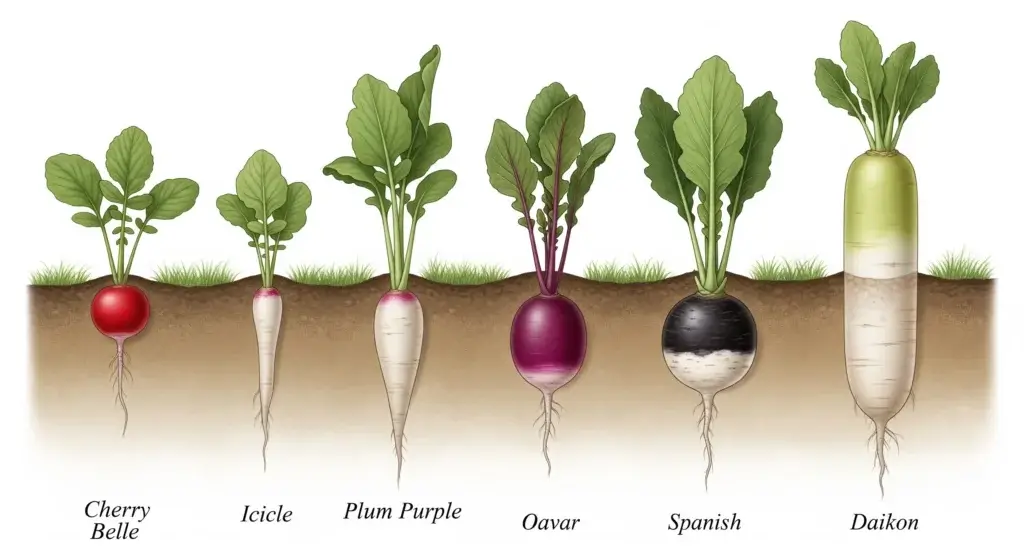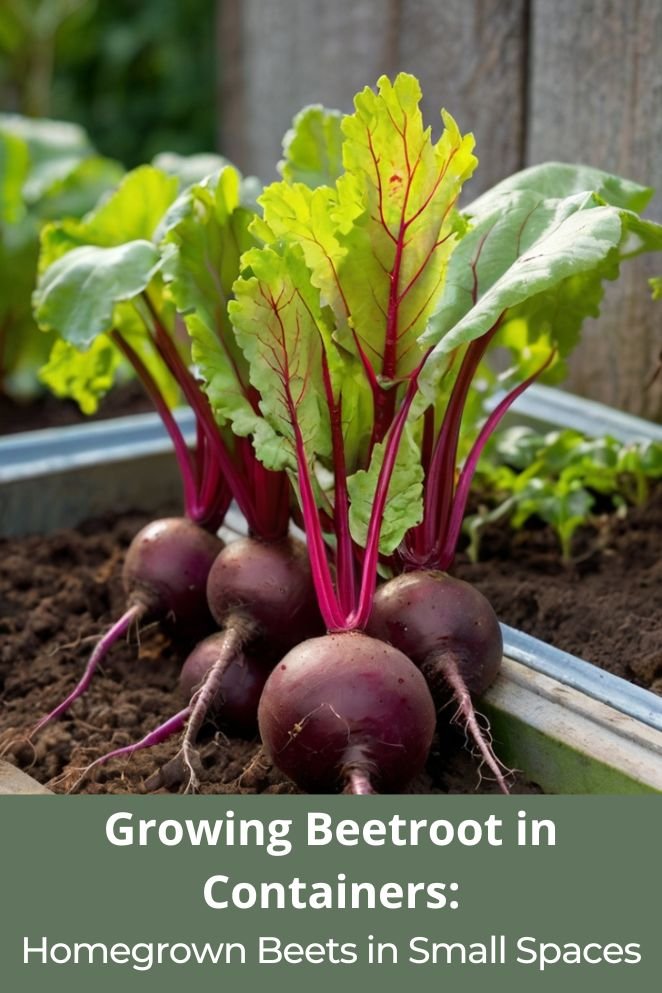
Beets are a top pick for container gardening—especially if you’re working with a tiny patio or balcony.
They don’t need much space, they’re beginner-friendly, and you get two crops in one: tasty roots and leafy greens.
Growing them in containers means you control the soil, the water, and the pests—basically, you’re the boss.
Plus, pulling fresh beets from a pot right outside your door? Kind of a power move.
Why Choose Container Growing for Beetroot?
Space efficiency
If you’ve got a small space—a balcony, patio, or even a sunny doorstep—containers make beet growing totally doable.
You don’t need a big backyard or raised beds to pull this off.
A deep pot and some good soil? You’re in business.
Better soil control
Let’s be real—most backyard soil is either rock-hard, too sandy, or just plain tired. In containers, you skip all that mess.
You get to start with fresh, loose, nutrient-rich soil that beets love.
No guessing, no mystery compaction, no “why won’t anything grow here?”
Pest and disease management
Container growing makes it easier to keep an eye on things.
If aphids or fungus show up, you can catch it early and take care of it fast—before it spreads.
You can even move your pot if needed.
Bad weather rolling in? Tuck it under cover.
Slugs taking over the garden bed? Your beets are safe on the balcony like VIPs.
Extended growing seasons
One of the coolest perks? You can cheat the calendar.
Start beets early by bringing pots inside on chilly nights. And when fall creeps in, just move them to a warmer spot and keep the harvest going.
It’s like putting your garden on wheels.
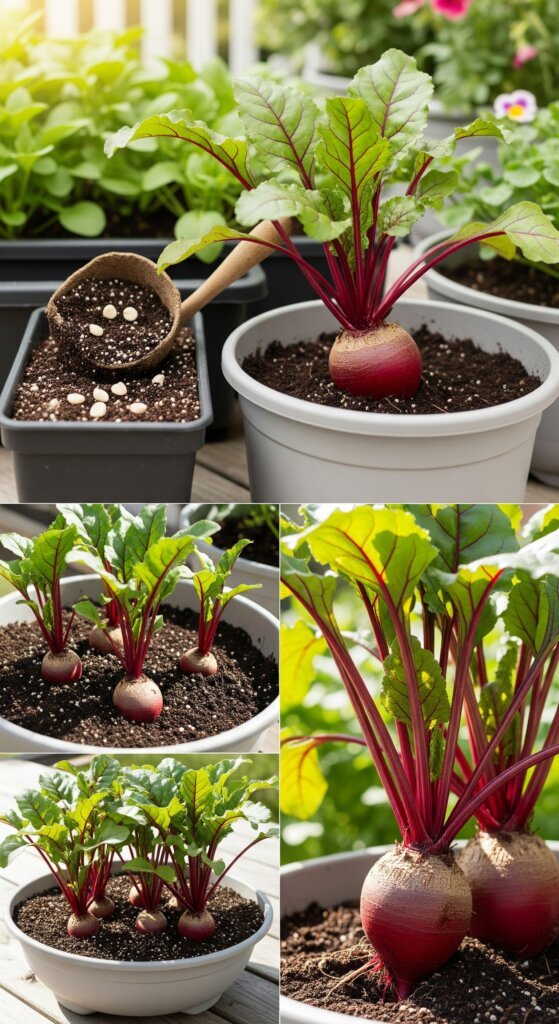
Essential Container Requirements
Pick the right size
Your beets need room to stretch their roots.
Grab a container that’s at least 8 inches (20cm) deep—though 10 to 12 inches deep is even better if you can swing it.
Width matters too: aim for a pot around 16 inches wide or 4 to 6 gallons in size.
Wider containers beat tall skinny ones here because beets like spreading out underground more than going deep.
Drainage and material selection
No drainage? No beetroot party.
Make sure your pot has plenty of holes at the bottom so water can escape—otherwise, you risk soggy roots and rot.
If your container’s stingy on drainage, grab a drill and add some holes yourself.
Material matters
- Ceramic pots: Great at keeping soil temperature steady, but they’re heavy and can chip if you’re clumsy.
- Plastic pots: Lightweight and tough, but they dry out faster in hot weather, so watch your watering.
- Fabric grow bags: Super breathable and drain well, but they can dry out quickly, too.
Pick what fits your style and space.
Soil mix and preparation
Forget regular garden dirt—too heavy, too compact.
Go for a quality potting mix, ideally something like John Innes No. 3 if you can find it.
Mix in compost plus some perlite or vermiculite to keep the soil airy and draining well.
Your beets prefer a slightly acidic to neutral pH—between 6.0 and 7.0—which most potting mixes already hit.
Fill your container up to about 1.5 inches from the top, so there’s room to water without spilling everywhere.
Lightly firm the soil, but don’t pack it down—beets need loose soil to grow those tasty roots.
Best Beetroot Varieties for Container Growing
Top recommended varieties
Not all beets are a good fit for pots.
The long, carrot-shaped ones? Skip ’em.
You want round, compact types that don’t need deep soil to thrive. Here are the top picks for container growing:
- ‘Red Ace’ – A total go-to. Grows uniform, deep red roots that look great and taste even better. It’s tough against disease and gives you solid greens, too. Great all-arounder.
- ‘Kestrel’ – Super tidy, globe-shaped beets with strong tops. This one’s bolt-resistant, which means it won’t freak out when the weather shifts.
- ‘Avalanche’ – Want to mix things up? Try this white beet. It’s sweet, mild, and kind of a show-off in salads and roasted veggie dishes.
- ‘Moulin Rouge’ – Another reliable variety that performs well in tight spaces. Classic color, compact growth, easy to manage.
How to choose the right one
Go for the short, round types—those are made for containers.
They need less depth and use space more efficiently than the long, lanky ones.
Also, check for disease resistance—especially things like leaf spot and downy mildew.
Container gardens can get stuffy, so strong genetics help.
And think about timing:
- Want a quick harvest? Look for varieties ready in 55–60 days.
- Got time to spare? Some go 70+ days, but they’ll give you bigger roots.
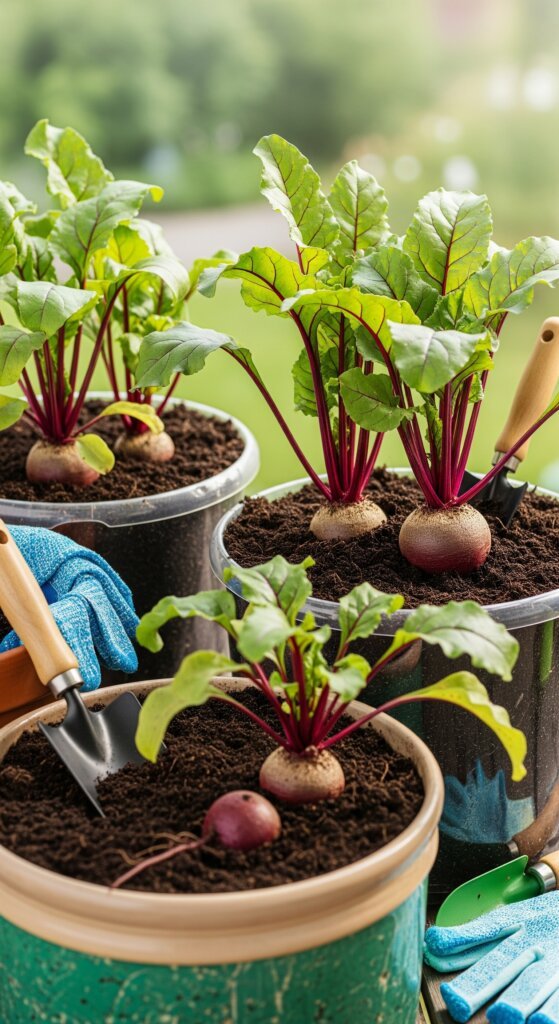
Planting and Seeding Techniques
Prep your seeds right
Before you drop those beet seeds in the soil, soak the pods in warm water for 2-3 hours.
It helps wake them up and get them ready to sprout.
Fun fact: what you think of as one beet seed is actually a little pod holding several seeds—so don’t be surprised when multiple seedlings pop up from one spot.
That’s why thinning is key later on.
Planting depth and spacing
Keep it simple: plant seeds about 1 inch deep, spaced 3 inches apart.
Use your finger to make small holes—no fancy tools needed.
This gives each beet enough room to grow roots and keeps your container packed just right.
If you’ve got a bigger pot, plant in rows or clusters but stick to that 3-inch spacing all around.
Keep the harvest coming
Want fresh beets all season? Try succession planting—start a new batch every 2 to 3 weeks.
It’s like staggered episodes of your favorite show, but with veggies.
Direct seeding vs. transplants
For container beets, direct seeding wins.
Plant straight into the pot, avoid the drama of moving seedlings, and your beets will grow stronger roots.
If you do start indoors, use biodegradable pots so you can plant the whole thing without messing up roots.
Just move seedlings when they’re small to keep transplant shock low.
Care and Maintenance
Watering tips
Keep the soil consistently moist—dry spells are when your beets start stressing out and might split.
Containers dry out faster than garden beds, so check your pots often.
When the top inch of soil feels dry, it’s time to give them a good, deep drink.
Forget quick sprinkles—deep watering helps roots grow strong.
Morning’s the best time to water so your beets can soak it all up before the sun turns up the heat.
In hot weather, you might be watering every day.
Cooler days? Maybe every few days is enough.
Just stick your finger in the soil—if it’s dry an inch down, don’t wait.
Feeding your beets
Beets aren’t greedy eaters, but they do need some love to grow big and lush in containers.
Start with a slow-release fertilizer mixed into your potting soil at planting time.
Then, every 2-3 weeks, feed them with a balanced liquid fertilizer like 10-10-10.
If you’re into organic, compost tea, fish emulsion, or seaweed extracts work great—just go easy and feed more often at lower doses.
No one wants burnt roots.
Thinning and leaf management
Since beet “seeds” are actually pods with multiple seeds inside, you’ll probably get clusters of seedlings popping up.
When they hit 2-3 inches tall, thin out the weaker ones so the strongest have space to grow.
Don’t be shy about harvesting leaves, either.
Pick outer leaves for salads or cooking, but leave the center growth untouched so your beets keep thriving.
It’s like getting two crops from one plant—pretty sweet, right?
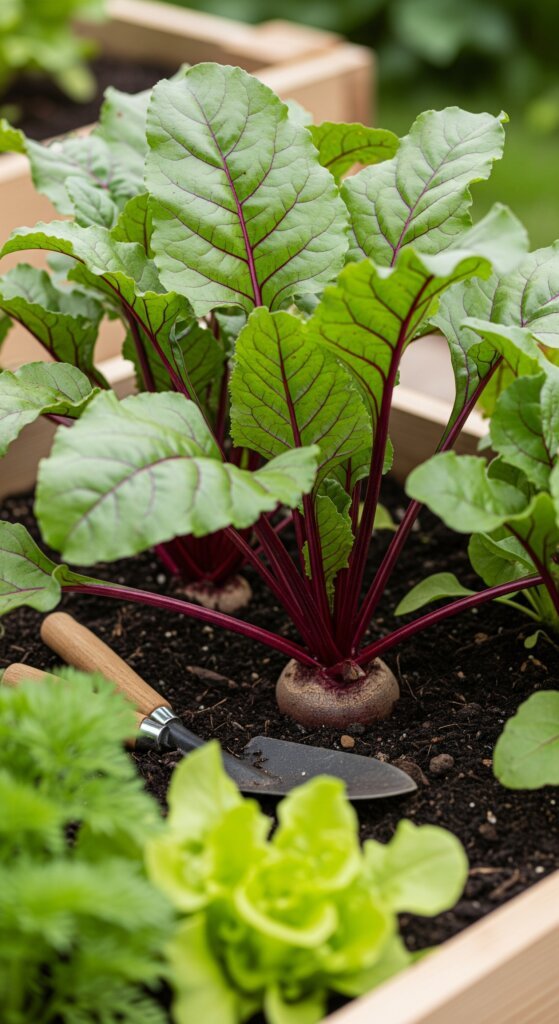
Pest and Disease Management
Watch out for these pests
- Leaf miners love munching on beet leaves, leaving weird tunnels that mess with the plant’s energy. Keep them out by tossing a bit of insect netting or a row cover over your pots.
- Aphids multiply fast, especially in the cozy container environment. Check your plants often and hit early infestations with insecticidal soap or neem oil before things get out of hand.
- Flea beetles chew tiny holes, and young beets hate them. Use row covers during the early growth phase to keep these little troublemakers off your plants.
Keep diseases at bay
Fungal nasties like leaf spot and downy mildew show up when things get humid.
Give your containers some breathing room and skip watering from above to keep leaves dry.
Root rot? That’s the nightmare of soggy soil.
Make sure your pots drain well and you’re not drowning your plants.
Good drainage and careful watering are your best weapons.
Rotate like a pro
Even container gardens need a break. Don’t plant beets in the same soil or container year after year.
Swap soil out or change containers to keep disease and pests from setting up camp.
Troubleshooting Common Problems
Growth issues
- Poor germination: Could be old seeds, planting them too deep, or dry soil. Use fresh seeds, plant about an inch deep, and keep the soil evenly moist while they germinate.
- Stunted growth: Check your setup—tiny containers, tired soil, or not enough nutrients are usually the problem. Upgrade the pot, refresh the mix, or give them a little feed boost.
- Bolting: That’s usually from stress—hot weather, cold snaps, or uneven watering. Use bolt-resistant varieties and keep conditions steady.
Quality problems
- Woody or tough roots: Keep the soil evenly moist and pull them when they’re just right—not baseball-sized.
- Split roots: Classic sign of letting the soil dry out, then flooding it. Keep watering steady to avoid this.
- Dull color: Beets need full sun and a little nutrition boost to get that deep, rich red (or white, or golden). Move them to a sunnier spot and stay on top of your feeding schedule.

Final Thoughts on Growing Beets in Pots
Container-grown beets are a total win—small space, big harvest. Get the basics right: deep pots, loose soil, steady watering, and the right variety.
Pay attention to your setup, tweak as you go, and don’t stress if it’s not perfect the first time.
Gardening’s part science, part “vibe check.”
Once you pull your first crisp, homegrown beet from the pot, you’ll wonder why you didn’t start sooner.
So grab a container and give it a go—your salads, smoothies, and roasted veggie trays will thank you.
